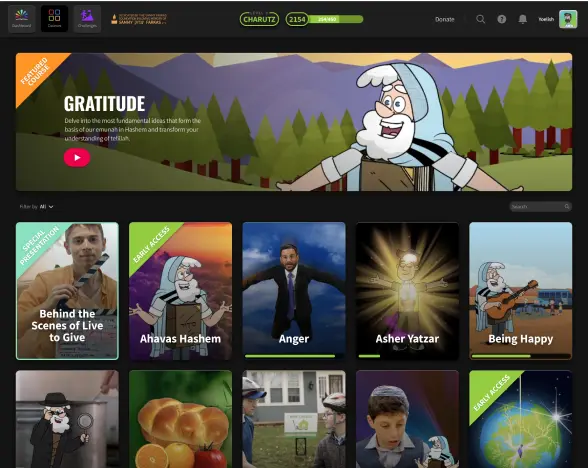Shalom in Action: How the Art of Everyday Peace Transforms Your Life
Have you ever walked into a room where two people weren’t speaking, but the tension was as thick as soup? Or maybe you were part of a misunderstanding that simmered for days (or longer) before finally dissolving with a simple “I’m sorry” or a shared smile. Most of us have been there, and it’s in these everyday moments that the power — and challenge — of shalom, peace, comes alive.
But what if making peace wasn’t just a lofty ideal? What if it was a skill you could learn and practice, making your home, friendships, and even your community more joyful and resilient? Let’s explore how blending Jewish wisdom with modern psychology gives us the blueprint for lasting peace, one small step at a time.
Why Is Peace So Hard… and So Important?
The sages taught that the world stands on three foundational pillars: truth (emes), justice (din), and peace (shalom). You might recognize this from Pirkei Avot, but psychologists echo this idea too: research shows that healthy relationships bolster our mental health, physical well-being, and even our ability to thrive under pressure.
But here’s the big challenge: truth and peace sometimes seem to tug us in opposite directions. Standing up for “being right” can spark conflict; seeking peace might mean letting go of being perfect or always having the last word. The question is—when do we fight for our perspective and when do we step back for the greater good?
The Story of the Lost Ring: An Everyday Lesson in Shalom
Here’s a true (and yes, somewhat funny) story. A young woman got married, and as a special gesture, her mother-in-law lent her a precious family ring. Imagine the horror when, on a Yom Tov walk along the beach, the ring slipped off and was lost in the sand! Tensions rose. Accusations were made. Hurt feelings lingered like a stubborn stain. Months later, while putting on his special suit, the husband found the ring in his jacket pocket! He quietly replaced it, claiming he’d kept it “safe” all along to avoid more heartache. For 20 years, he patiently endured gentle teasing—choosing peace over pride, harmony over “truth.”
We’ve all had moments we could turn into drama, or into laughter. This husband became a “rodef shalom,” chasing not away from peace, but after it—just like Aharon HaKohen, the great peacemaker of the Torah.
Ancient Wisdom Meets Modern Psychology
Jewish teachings hold shalom so high that, as the Talmud says, “Hashem found no vessel to hold blessing for Israel other than peace.” Modern science agrees! Studies repeatedly show that families, teams, and even nations that prioritize listening, forgiveness, and reconciliation flourish more than those that don’t.
Being a peacemaker isn’t about being a doormat—it’s about creative problem-solving. When we choose to “see the other side,” empathize, or sometimes let something small slide, we’re not just avoiding conflict; we’re building emotional muscles for a happier life.
Practical Steps: Bringing Shalom into Your Day
So what can YOU do, starting now? Try these realistic, everyday peace-making hacks:
- Pause Before Reacting: Next time emotions run high, take a deep breath and count to five. Give yourself space to respond thoughtfully, not with knee-jerk reactions.
- Use “I Feel” Statements: Instead of “You always…” try “I feel upset when…” This simple shift softens tension and invites real conversation.
- Seek First to Understand: Before defending your point, ask the other person to share theirs. Repeat what you heard — it’s a trick therapists swear by!
- Swallow Small Grievances: Is it truly important, or can you let it go? Remember: sometimes peace is more valuable than being right.
- Cultivate “Rodef Shalom” Habits: Be the first to smile, apologize, or extend a hand. As Hillel taught, “Be among the students of Aharon—love peace, pursue peace…”
Try picking one of these and practice for a week. You may be surprised by how much lighter your days feel!
Peace Is the Key to Every Blessing
The secret the Torah reveals—and modern psychology proves—is that peace isn’t just the absence of arguing. It’s the full presence of understanding, flexibility, and goodwill. Shalom must start at home, blossom in friendships, and ripple into every area of our lives. When we choose peace, we don’t only improve our relationships with others—we invite blessings into our own hearts.
Ready for More Inspiring Torah Wisdom?
You’re just one click away from fun, free, totally clean Torah videos, games, and challenges the whole family will love! Want even more easy-to-use guides for living your best Jewish life? Sign up at https://torahlive.com/signup — 100% clean, 100% fun, and 100% guaranteed to leave you smiling!
Dare to pursue shalom today. Who knows? Your next act of peace just might change everything.
